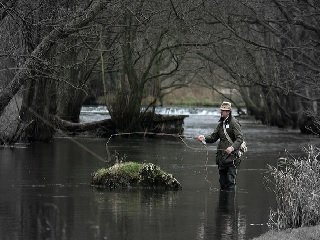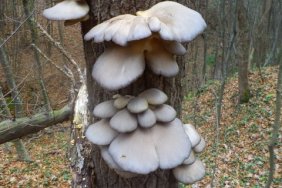 Changes in the seasons can affect your local waters in some crazy ways. Early Spring, for example, tends to bring fluctuations in water levels to streams, rivers, or lakes. You don’t have to wait for water levels to drop before hitting the rivers with your waders, though. While other fly anglers are sitting on the couch, waiting for their ideal conditions, you could take advantage of great early Spring trout action. Today we’ll explore how!
Changes in the seasons can affect your local waters in some crazy ways. Early Spring, for example, tends to bring fluctuations in water levels to streams, rivers, or lakes. You don’t have to wait for water levels to drop before hitting the rivers with your waders, though. While other fly anglers are sitting on the couch, waiting for their ideal conditions, you could take advantage of great early Spring trout action. Today we’ll explore how!
When the waters are high and murky, big trout will often set up in slow-moving eddies. Contrary to popular belief, though, these fish often face downstream in the slack water behind boulders and other current-breaking structures. In these situations, nymphs that use some form of purple material, or have flash backs, are highly visible to trout in dirty water. With them you’ll need a 10-foot leader, as well. Start at the outside edge of the eddy and steadily work your way to its center. Then, cast upstream and allow the fly to dead-drift, making sure to take up the slack as the fly drifts back toward you. Keep an eye out for subtle bumps and stops, too.
If you’re fishing still waters, you can use a thermometer to locate springs, which can produce water 10 degrees warmer than the rest of the lake. Furthermore, submerged weedbeds tend to be thicker in these areas and trout will hunt them while feeding on aquatic insects. Using a 20-foot leader, tie a light soft hackle on a dropper, a lightly weighted nymph on a dropper, and a heavy nymph, in that order top to bottom. With this rig, make an open loop cast parallel to the weedbed and swim the flies toward you very slowly. Now, gently twitch the rod tip from side to side, pausing and repeating, to trigger strikes from any followers.
Another area you shouldn’t miss out on is shallow runs found between deep runs, especially when the water level rises and increases the depth of those shallow runs. Here, an inline double fly rig using a shad streamer 18 inches below a size 10 Pheasant Tail nymph will perform well. Cast it upstream and allow the flies to sink, but instead of stripping the line, gently lift the rod then lower it to give the flies an enticing crippled action. Trout will often strike just as the flies begin to rise in the water column or immediately after they begin to fall.
These are just a handful of tactics that you can use to capitalize on big trout early in the Spring. Don’t be caught twiddling your thumbs, waiting for “ideal” conditions; use the techniques outlined above to pull big trout from the streams before everyone else makes their way there!








